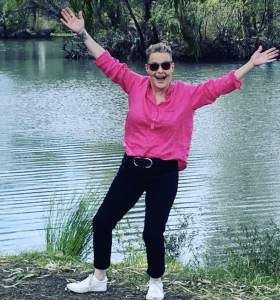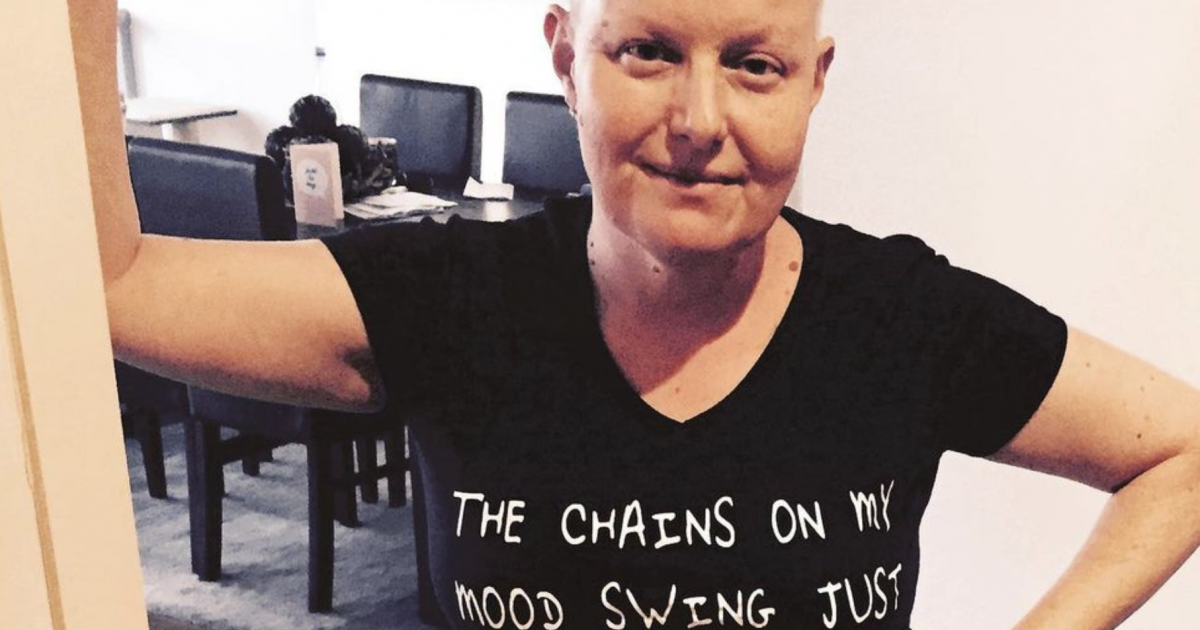Supermom Fights Cancer Three Times
- Wendy Dean, 51, started getting screened for breast cancer at the age of 40, and in 2015 doctors diagnosed her with triple-negative breast cancer. The 51-year-old mother-of-two assumed the operation marked the end of her battle, but the disease would return two more times in as many years.
- That is because triple-negative breast cancer does not respond to hormonal therapy. “After the third diagnosis, you really start to think this is going to be it, this is going to kill me,” Dean said in an interview with FEMAIL.
- Wendy Dean is one of the roughly 20 percent of breast cancer patients diagnosed with triple-negative breast cancer. In a previous interview, Dr. Irene Wapnir, a surgical oncologist at Standford Health Care, explained to SurvivorNet that this form of the disease got its name because it lacks the three main drivers of breast cancer: the estrogen receptor, the progesterone receptor, and the HER2 receptor.
Wendy Dean started getting screened for breast cancer at the age of 40, and in 2015 doctors diagnosed her with triple-negative breast cancer.
Read More
“When doctors told me they had found something, I thought ‘how bad could it be?’,” Dean said of her attitude at the time.
However, that all changed when she got a call from her doctor while arriving to work one Monday morning.
“I walked straight into my co-worker’s office who held my hand when the doctor told me I had triple-negative breast cancer – and honestly, I don’t remember a lot after that,” Dead recounted of the moment she got word of her diagnosis.
She quickly launched into battle against the disease, and just a few months later, she had a double mastectomy.
What seemed to be the end ultimately turned out to be only the beginning, though for Dean.
“So many people think after having a double mastectomy you can’t get breast cancer again – but you can, and I did,” noted Dean.
Both times, her cancer returned to her lymph nodes.
She underwent 16 weeks of chemotherapy followed by radiotherapy when the disease emerged again in 2017 and an additional 12 weeks of radiotherapy when the disease returned in 2018.
That third diagnosis almost managed to break Dean’s spirit.
“I felt a hard lump that didn’t move around, and that’s when my daughter said ‘it’s back, isn’t it,’ and we both broke down in tears,” said Dean.
“Information is everything, so I didn’t panic until I knew what was going on.”
View this post on Instagram
Dean now tries to educate women on the importance of screenings through her Survivor Storyteller accounts on social media, having been saved three times because of these routine check-ups.
The cancer has not returned in the three years since her last diagnosis, and Dean is filled with nothing but gratitude as a result.
“Now I just appreciate how lucky I am that I did get to see my kids grow up and hopefully grow old,” she said.
“If anything this has made me a stronger person more than I ever was before and made me learn who those in my close circle was really there for me.”
What Is Triple-Negative Breast Cancer?
Triple-negative breast cancer is one of the most aggressive forms of the disease. It is also one of the most common.
Wendy Dean is one of the roughly 20 percent of women diagnosed with triple-negative breast cancer. In a previous interview, Dr. Irene Wapnir, a surgical oncologist at Stanford Health Care, explained to SurvivorNet that this form of the disease got its name because it lacks the three main drivers of breast cancer: the estrogen receptor, the progesterone receptor, and the HER2 receptor.
As a result, it does not respond to traditional treatments that drugmakers created to target those drivers.
Patients have the most success beating the disease with chemotherapy like Dean or enrolling in a clinical trial.
What Is Triple-Negative Breast Cancer?
Chemo For Triple-Negative Breast Cancer
Dean underwent chemotherapy twice during her triple-negative breast cancer battle.
Dr. Elizabeth Comen, a medical oncologist at Memorial Sloan Kettering Cancer Center, told SurvivorNet that it is still the most effective treatment plan for women battling the disease.
“If a woman has triple-negative breast cancer, meaning she is not hormone-receptor-positive or HER2-positive, then the first line is really to give – unless it’s part of a clinical trial – is really to offer chemotherapy,” explained Dr. Comen.
“Triple-negative breast cancers are most responsive to chemotherapy at the outset. Of course, there are many other options that a woman may be able to explore, including immunotherapies as part of a clinical trial and other targeted therapies that may be appropriate depending on what clinical trials are available where she is being treated.”
Once treatment is over, a lifetime of monitoring begins for women like Dean.
“We know that breast cancer can come back years, even decades, later. So, what sort of monitoring do we do? In the beginning, when a woman has recently completed her treatment, I usually see women every three to four months to do a breast exam,” said Dr. Comen.
“They will get imaging every year or every six months, depending on, in conjunction with the surgeon or radiologist what may or may not be appropriate for imaging. We may do blood work about once a year.”
Dr. Comen said she also uses those visits to talk to the women and see how they are feeling and anything that seems off.
“Do they have a pain that hasn’t gone away in months? Or, Do they have shoulder pain now and again when they play tennis? But it goes away. It gets better, and it comes back months later, and then gets better,” said Dr. Comen.
“There are different types of aches and pains that we think about and that we look for with patients.”
Chemo For Triple-Negative Breast Cancer
Learn more about SurvivorNet's rigorous medical review process.


